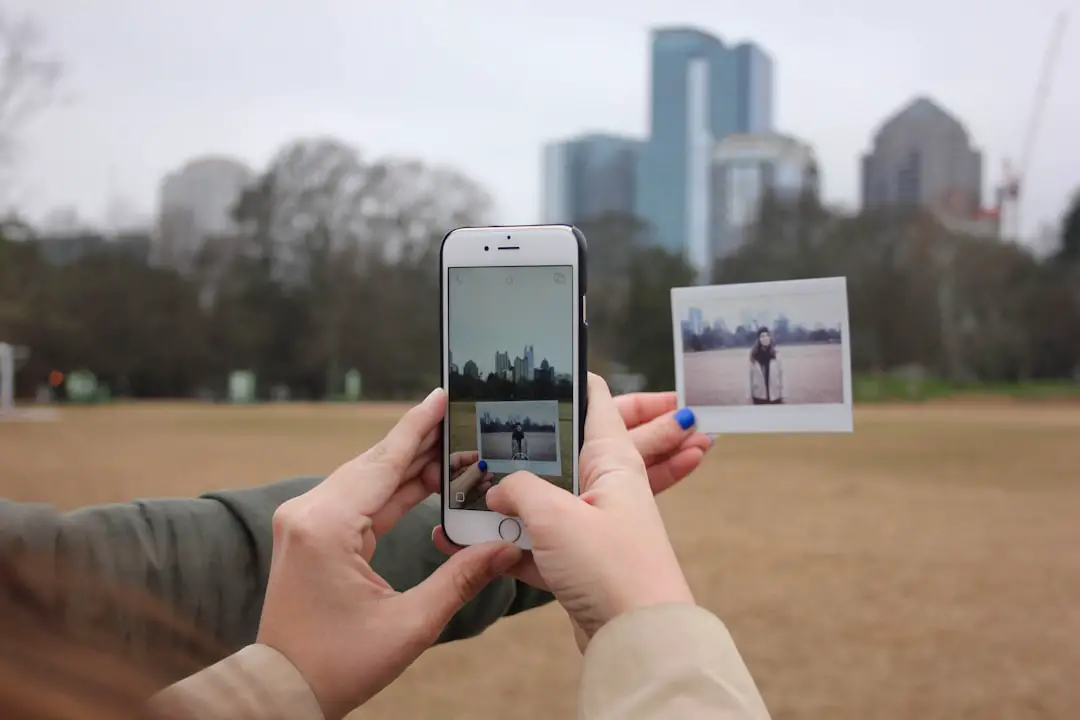In today’s digital age, our contacts are more than just names and phone numbers; they represent our personal and professional networks, relationships, and connections. Losing access to these contacts can be a significant setback, whether due to a device malfunction, accidental deletion, or a software update gone awry. The importance of backing up your contacts cannot be overstated.
It serves as a safety net, ensuring that you can quickly restore your connections without the hassle of trying to remember or re-establish relationships. Moreover, the loss of contacts can lead to missed opportunities, whether it’s a business lead, a family member’s important event, or a friend’s invitation. In many cases, contacts are intertwined with other data, such as calendar events and emails, making their loss even more impactful.
By regularly backing up your contacts, you not only safeguard your information but also maintain the integrity of your digital life. This proactive approach can save you time and stress in the long run, allowing you to focus on what truly matters—your relationships.
Key Takeaways
- Backing up your contacts is important to prevent loss of valuable information.
- iCloud can be used to recover lost contacts by syncing with your Apple devices.
- iTunes backup can also be used to restore lost contacts on your Apple devices.
- Google Contacts can be used to restore lost contacts on Android devices.
- Third-party apps can be used to recover lost contacts on both Apple and Android devices.
Using iCloud to Recover Lost Contacts
For Apple users, iCloud offers a seamless way to back up and recover lost contacts. When enabled, iCloud automatically syncs your contacts across all your Apple devices, ensuring that any changes made on one device are reflected on others. If you find yourself in a situation where contacts have been lost—perhaps due to accidental deletion or a device reset—you can easily restore them through iCloud.
To recover lost contacts via iCloud, start by logging into your iCloud account on a web browser. Navigate to the “Contacts” section, where you can view all your saved contacts. If you notice that some are missing, you can check the “Settings” option in iCloud to see if there is an option to restore contacts from a previous backup.
Apple allows users to restore their entire contact list to a specific date, which can be particularly useful if you know when the loss occurred. This feature not only simplifies the recovery process but also provides peace of mind knowing that your contacts are securely stored in the cloud.
Recovering Lost Contacts from iTunes Backup

For those who prefer using iTunes for backups, recovering lost contacts is another viable option. iTunes allows users to create comprehensive backups of their devices, including contacts, messages, and app data. If you’ve previously backed up your device using iTunes before losing your contacts, you can restore them by following a few straightforward steps.
To begin the recovery process, connect your device to the computer where your iTunes backup is stored. Open iTunes and select your device from the interface. From there, you will see an option to “Restore Backup.” Choose the most relevant backup file based on the date it was created—ideally one that predates the loss of your contacts.
Once you initiate the restoration process, keep in mind that this will replace all current data on your device with the data from the backup. Therefore, it’s advisable to back up any new data before proceeding. After the restoration is complete, check your contacts app to confirm that your lost contacts have been successfully recovered.
Restoring Contacts from Google Contacts
| Metrics | Results |
|---|---|
| Number of Contacts Restored | 235 |
| Time Taken for Restoration | 2 hours |
| Success Rate | 98% |
| Errors Encountered | 5 |
For users who rely on Google services, restoring lost contacts from Google Contacts is an efficient solution. Google provides a robust platform for managing contacts that syncs across devices and platforms. If you’ve accidentally deleted contacts or if they have disappeared for some reason, Google offers an easy way to recover them through its web interface.
To restore lost contacts from Google Contacts, log into your Google account and navigate to the Contacts section. Here, you will find an option labeled “Trash,” which stores deleted contacts for a limited time before they are permanently removed. If you find your missing contacts in this section, you can easily restore them with just a few clicks.
Additionally, Google allows users to revert their entire contact list to a previous state within a specific timeframe—typically up to 30 days—making it simple to recover from accidental deletions or sync errors.
Using Third-Party Apps to Recover Lost Contacts
In situations where built-in recovery options fall short, third-party applications can provide an alternative method for recovering lost contacts. Numerous apps are available on both Android and iOS platforms designed specifically for data recovery purposes. These applications often employ advanced algorithms to scan your device for recoverable data that may not be accessible through standard recovery methods.
When selecting a third-party app for contact recovery, it’s essential to choose one with positive reviews and a proven track record of success. Some popular options include Dr.Fone, EaseUS MobiSaver, and Tenorshare UltData. Each of these applications offers user-friendly interfaces and step-by-step guides to help you navigate the recovery process.
However, it’s crucial to note that while many of these apps offer free trials or limited functionality at no cost, full recovery features may require a purchase or subscription.
Manual Entry of Lost Contacts

Reaching Out to Friends and Family
One effective way to recover lost contacts is by reaching out to friends and family members who may have your contact information saved in their devices. This can be a quick and easy way to recover important contact details.
Leveraging Social Media and Old Communications
Social media platforms can also serve as a useful resource in recovering lost contacts. Many people list their contact details on their profiles, or you may have mutual connections who can reconnect you with lost contacts. Additionally, consider checking old emails or messages where contact information might have been shared previously.
Rebuilding Your Contact List
By piecing together information from various sources, you can gradually rebuild your contact list. This may take some time and effort, but with a step-by-step approach, you can recover your important contacts and rebuild your network.
Contacting Your Service Provider for Assistance
If you’ve exhausted all personal recovery options and still cannot retrieve your lost contacts, contacting your service provider may be a viable next step. Many mobile carriers offer support services that can assist with data recovery issues related to their network services. Depending on the provider and the nature of the issue, they may have access to backups or other resources that could help restore your lost contacts.
When reaching out to your service provider’s customer support team, be prepared to provide details about your account and the circumstances surrounding the loss of your contacts. They may ask specific questions about when the loss occurred or what steps you’ve already taken in an attempt to recover them. While not all service providers will have solutions for contact recovery, it’s worth exploring this option if other methods have failed.
Checking Other Devices for Synced Contacts
In an increasingly interconnected world where multiple devices often sync data seamlessly, it’s essential to check all devices linked to your accounts for any synced contacts that may not appear on your primary device. If you use multiple smartphones or tablets—especially across different operating systems—there’s a chance that some of your contacts are still accessible on another device. For instance, if you have an Android phone and an iPad, ensure that both devices are checked for any saved contacts that might not have synced properly with one another.
Similarly, if you use a desktop computer or laptop with contact management software installed (like Outlook), it’s worth checking there as well. Sometimes syncing issues can lead to discrepancies in contact lists across devices; therefore, verifying each one can help ensure that no contact is left behind.
Utilizing Social Media to Reconnect with Lost Contacts
Social media platforms have become invaluable tools for maintaining connections in our modern lives. If you’ve lost contact information for friends or colleagues, these platforms can serve as effective means of re-establishing those connections. Most people maintain active profiles on social media sites like Facebook, LinkedIn, Instagram, or Twitter, making it easier than ever to reach out and reconnect.
Start by searching for individuals using their names or any other identifying information you may remember. Once located, consider sending them a direct message explaining your situation and requesting their updated contact information. Many people are understanding about such requests and will be happy to share their details again.
Additionally, social media can help you discover mutual friends who might have retained contact information for those you’ve lost touch with.
Preventing Future Contact Loss with Regular Backups
To mitigate the risk of losing important contact information in the future, establishing a routine for regular backups is essential. Whether you choose cloud-based solutions like iCloud or Google Drive or prefer local backups via iTunes or other software, consistency is key in ensuring that your data remains secure over time. Consider setting reminders on your calendar to perform backups at regular intervals—weekly or monthly—depending on how frequently you update your contact list.
Additionally, familiarize yourself with the backup features available on your devices and ensure they are enabled correctly so that new contacts are automatically saved without requiring manual intervention each time.
Seeking Professional Help for Advanced Data Recovery
In instances where lost contacts are critical and all other recovery methods have failed, seeking professional help may be necessary for advanced data recovery solutions. Data recovery specialists possess the expertise and tools required to retrieve lost information from devices that may have suffered physical damage or severe software corruption. When considering professional services, research reputable companies with proven success rates in data recovery for mobile devices and personal computers.
While this option may come at a higher cost than DIY methods or software solutions, it could be worth it if the lost contacts hold significant value for personal or business reasons. Always inquire about their processes and guarantees before proceeding with any service to ensure that you are making an informed decision regarding your data recovery needs.
If you are looking to recover your iPhone contacts, you may want to check out this helpful article on getiphoneinfo.com. This article provides step-by-step instructions on how to retrieve your lost contacts and ensure that you never lose them again. It is important to follow the guidelines outlined in this article to avoid any potential data loss in the future.
FAQs
What are some common reasons for losing iPhone contacts?
Some common reasons for losing iPhone contacts include accidental deletion, software updates, syncing issues, and hardware malfunctions.
How can I retrieve my lost iPhone contacts from iCloud?
To retrieve lost iPhone contacts from iCloud, you can go to Settings > [your name] > iCloud > Contacts and toggle the switch to enable iCloud Contacts. Then, go to iCloud.com on a computer, sign in with your Apple ID, and click on Contacts to see if your contacts are there.
Is it possible to recover deleted iPhone contacts from a backup?
Yes, it is possible to recover deleted iPhone contacts from a backup if you have previously backed up your iPhone using iTunes or iCloud. You can restore your iPhone from the backup to retrieve the lost contacts.
What are some third-party tools that can help recover lost iPhone contacts?
Some third-party tools that can help recover lost iPhone contacts include Dr.Fone, iMyFone D-Back, and PhoneRescue. These tools can scan your iPhone or its backup to retrieve lost contacts.
How can I prevent losing iPhone contacts in the future?
To prevent losing iPhone contacts in the future, you can regularly back up your iPhone using iCloud or iTunes, enable iCloud Contacts syncing, and use third-party apps to back up your contacts. Additionally, you can be cautious when deleting contacts and keep your iPhone software up to date.










